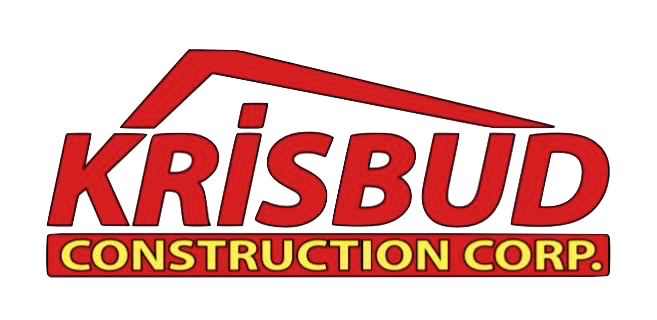Maintaining Vintage Brick Buildings in Chicago: A Guide to Historic Masonry
Chicago doesn’t just have buildings—it has stories carved in limestone and stacked in old Chicago common brick. Owning a vintage masonry building here is like holding a piece of the city's soul in your hands. But if you want that legacy to last, you have to maintain it with care, not just caulk and hope.
Most historic brick buildings in Chicago were constructed before modern code requirements. Their walls breathe, shift, and react to the elements differently than newer construction. Lime-based mortar, soft brick, and solid wall systems demand specialized maintenance that respects both structure and heritage.
You can’t treat a hundred-year-old building like it was built in 2010. If your property has weathered a few Chicago winters, here’s how to ensure it lasts another century.
Understanding What Makes Chicago’s Historic Masonry Unique
Historic brick isn't just brick—it’s softer, more porous, and often handmade. Modern bricks, on the other hand, are harder and fired at higher temperatures, making them incompatible with older lime mortars.
Lime mortar flexes with the seasons. It breathes. That might sound odd to some, but it’s exactly what keeps water from getting trapped and breaking the wall from the inside out. Applying modern Portland cement to historic mortar joints? That’s like putting duct tape on a violin.
If you’re maintaining a Chicago greystone or brick two-flat from the 1920s, it’s essential to understand these material differences before calling in a contractor. Otherwise, your "repairs" could actually cause further deterioration.
Signs Your Historic Masonry Needs Attention
Chicago’s climate doesn’t play fair with masonry. The temperature swings, freeze-thaw cycles, and lake-effect moisture chip away at even the toughest walls.
Look for telltale signs like cracked mortar joints, crumbling bricks near the base of the structure, or bulging walls. Efflorescence—that white, chalky residue on the surface of your brick—means water is pushing salts to the exterior. It’s a symptom, not the disease.
Parapet walls, chimney stacks, and lintels are some of the most vulnerable spots. If bricks near your coping stones look loose or your chimney leans like it’s trying to escape, don’t wait. Schedule an inspection.
Tuckpointing: The Right Way (And the Wrong Way)
Tuckpointing in Chicago is more than just scraping and slapping in new mortar. When it comes to vintage masonry, it’s part surgery, part art.
Mortar must match the original in both strength and permeability. Using a harder mortar than the brick causes the brick to crack—a common mistake in historic buildings where Portland cement was inappropriately used. Lime-based mortar is the only option that lets historic walls do what they were built to do: move and breathe.
It also matters how deep you go. Proper tuckpointing involves cutting back old mortar to a proper depth—about 3/4 of an inch—and filling it in layers. Skim-coating the surface for a "quick fix" is like painting over rust and calling it restored.
Waterproofing Without Suffocating the Walls
Most historic brick walls are meant to absorb and release moisture naturally. Sealing them with impermeable coatings traps that moisture, which leads to spalling and structural stress.
Breathable water repellents, mineral-based coatings, and proper drainage are the right approach. It’s not about making walls waterproof—it’s about managing moisture flow and allowing the building to maintain its own equilibrium. Learn more about proper masonry waterproofing and sealing in Chicago.
Gutters, downspouts, and grading around the foundation all play a role in preserving historic masonry. A clogged gutter in January can do more damage to a 100-year-old wall than a summer thunderstorm.
Navigating Chicago's Historic Building Regulations
If your property is landmarked or in a historic district, expect an added layer of care—and paperwork. Chicago's Department of Buildings and the Historic Preservation Division both have jurisdiction.
Even basic tuckpointing or facade repair may require a permit or preservation review. Contractors unfamiliar with historic code compliance may unintentionally trigger violations, or worse, damage irreplaceable materials.
Work with a Chicagoland masonry contractor who understands how to prepare documentation, match traditional materials, and submit scope of work in accordance with municipal requirements. You don’t want to explain to the city why your parapet wall was rebuilt with concrete block.
Long-Term Masonry Preservation: What It Takes
Preserving a historic building isn’t a one-and-done project. It’s a commitment. Annual inspections, periodic tuckpointing, and early intervention are the keys to avoiding major restorations down the road.
Keep documentation of repairs, including before-and-after photos, materials used, and the name of the contractor. Having a "maintenance memory" for your building pays off when it's time to refinance, sell, or appeal to preservation-conscious buyers.
Preventative masonry maintenance may not be glamorous. But it is the quiet, behind-the-scenes work that keeps Chicago's architectural history standing proud. Most importantly, choose the right historic masonry contractors in Chicago.
Why Work with Krisbud Construction
Krisbud Construction specializes in masonry repair and restoration for vintage and historic buildings throughout the Chicago area. We don’t just repair walls—we preserve legacies.
Our team understands lime mortar, brick aging patterns, parapet wall failure points, and how to navigate city ordinance with zero shortcuts. We provide detailed inspections, honest estimates, and skilled craftsmanship that respects the building’s age, material, and story.
Contact us to schedule a consultation and learn how we can help your historic building stay beautiful, safe, and structurally sound—without sacrificing what makes it special.

